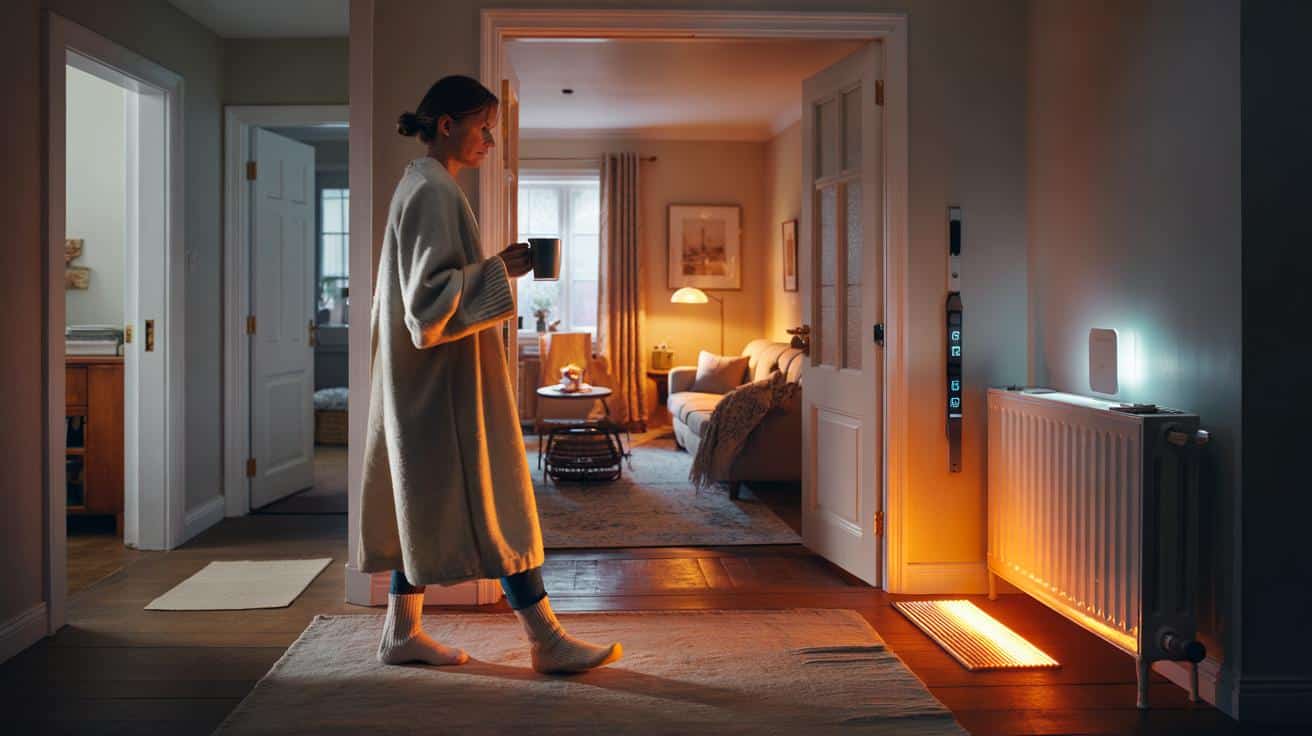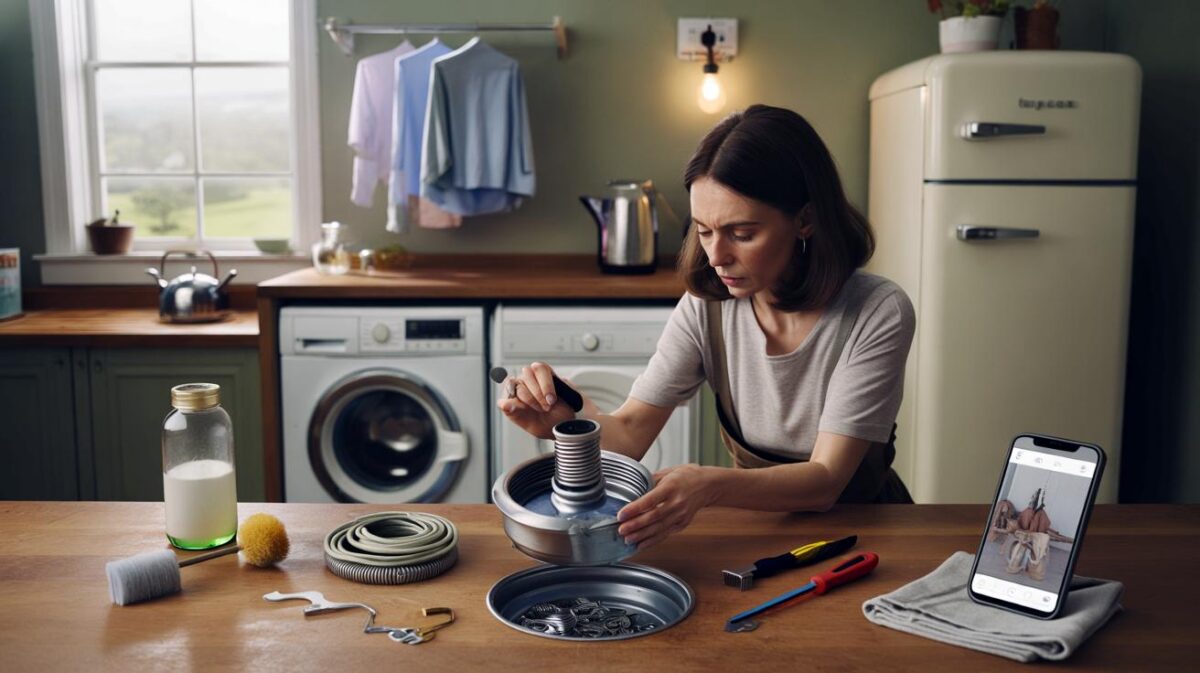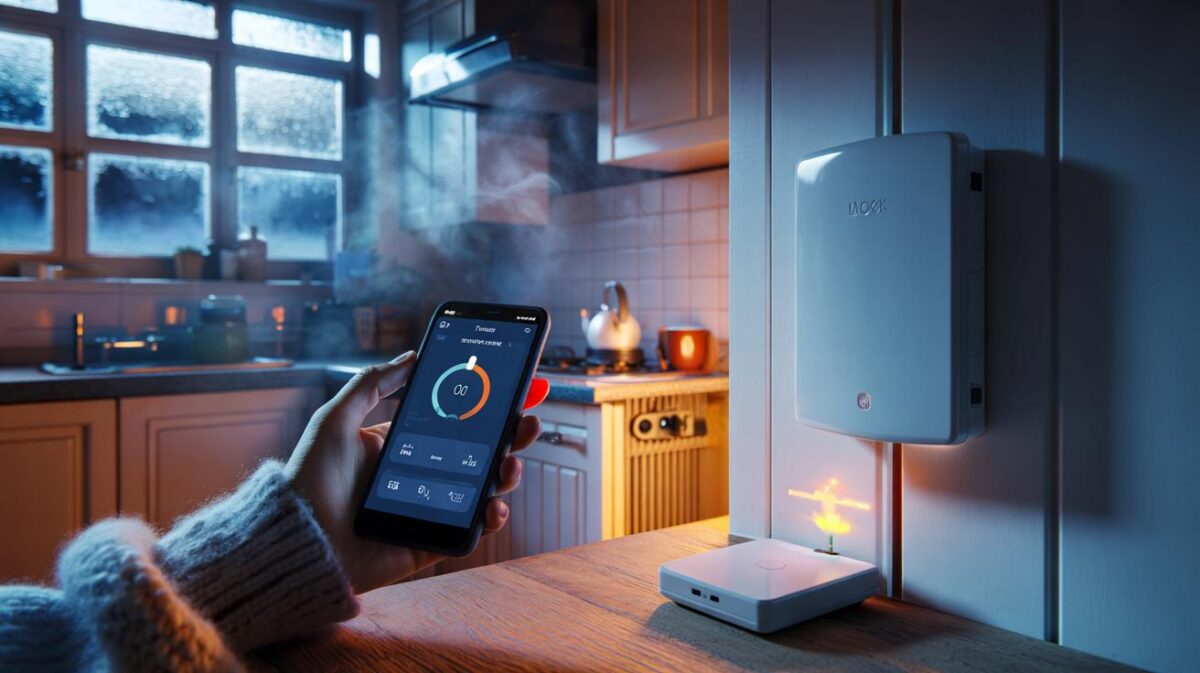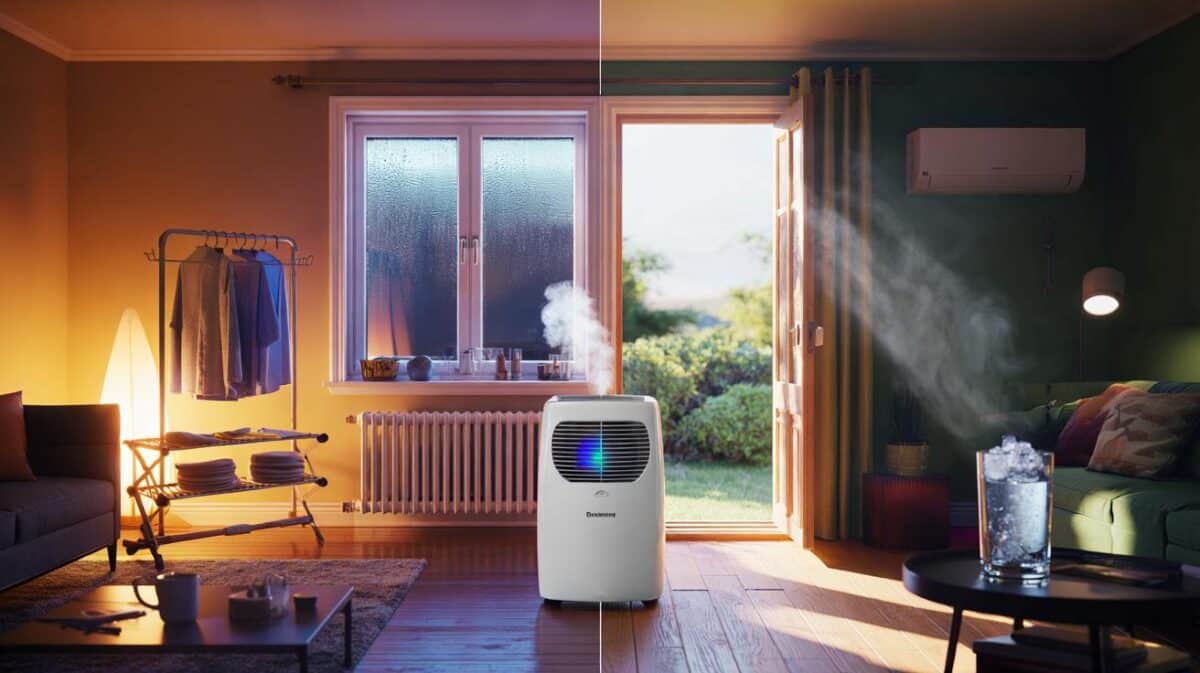You don’t need to warm empty corridors and spare rooms to feel cosy. The trick is to shape warmth around you as you move — like a soft spotlight that follows you from kettle to sofa to bed.
It’s 7:12am, kettle on, slippers half-failing, and the house feels like it’s holding its breath. The living room is still at last night’s set-back, the spare room is glacial, and the radiators are doing that awkward just-woke-up rattle. You pad around, hugging a mug, deciding which room deserves heat first as if you’re rationing a secret currency.
Outside, the neighbour’s boiler hums like a small plane. Inside, you begin a little dance: kitchen warm, hall cool, office not quite. It’s surprisingly pleasant when the heat is where you are, instead of everywhere. You start to wonder about a home that doesn’t blast warmth indiscriminately, but guides it like lamplight.
What if warmth could follow you?
The case for heat zoning at home
Most of us only occupy one or two rooms at a time. Heating the whole house for that single human orbit is like lighting every lamp for a page of reading. **Heat the person, not the room**, and you immediately change the equation.
Old habits die hard, though. Central heating was sold as “set-and-forget”, and we learned to nudge a thermostat rather than shape our days. A zoned mindset asks a simpler question: where will you actually be in the next hour?
We’ve all had that moment where the lounge is toasty, but a quick dash to the kitchen feels like crossing the Arctic. That sense of in-between cold pushes people to dial the whole place up. In the UK, space heating eats roughly sixty per cent of a home’s energy use, so the stakes are real. Trim the target temperature by a single degree and typical households can shave around five to six per cent off heating demand. Zoning compounds that by heating less volume, for less time.
There’s also the physics. Warm air rises and leaks; radiant heat warms bodies and surfaces. Convection fills a room, while radiation makes you feel warm without chasing every cubic metre. Doors, curtains, and rugs act like simple valves: close them, and you shrink the space you’re asking to stay warm. Open-plan can still work; you just create islands of comfort and let the voids rest cool.
Practical zoning: let warmth follow your steps
Map a “warm path” for your day. Start with the rooms you use most in the next two hours and set them slightly above your base. Fit smart TRVs on radiators so they open only when you enter; pair with schedules that mirror your routine. Add a low-watt radiant panel by the desk, a heated throw on the sofa, and a discreet foot warmer under the table. Small, targeted heat delivers big comfort.
Close internal doors and use draught excluders to stop warmth bleeding into hallways. Think layers: a light fleece and wool socks buy you degrees you don’t have to pay for. Rugs on bare floors cut that sneaky heat sink feeling. Don’t block radiators with sofas, and bleed them at the start of the season. Let’s be honest: nobody actually does that every day.
Many homeowners reach for a 2 kW fan heater and wonder why the bill jumps. A better bet is radiant where you sit, and moderate air warmth where you move.
“You don’t need a tropical climate in every room,” says energy consultant Priya Shah. “You need a friendly microclimate where you are — then let the rest of the house nap.”
- Think radiant, not just warm air: desk panels, infrared bars, and heated throws feel warm at lower room temps.
- “Close the loop”: doors shut, curtains lined, keyholes covered, letterbox brush on.
- Humidity between 40–50% makes air feel warmer; a bowl on the radiator or a small humidifier can help.
- Don’t use the hob or oven for heat — it’s unsafe and adds moisture you don’t want.
- Use smart plugs to time personal heaters for 30–45 minutes, not hours.
How to build your personal heat zones in real life
Begin with a base temperature that’s comfortable for circulation areas, then layer hotspots. Kitchen at 18–19°C for breakfast, study at 19–20°C from 9 to 12, living room at 19–20°C from 18 to 22. Keep halls and spare rooms cooler, doors closed. It’s a choreography, not a fixed decree.
Design a kit that moves with you. A soft, lined gown by the sofa. A plug-in foot mat under the desk. A heated throw that lives on the armchair. *This is about comfort, not punishment.* You’re stacking small wins so warmth feels near, not noisy.
Watch the edges. Don’t over-dry the air; aim for that mid-range humidity sweet spot so your skin doesn’t feel chilly. Avoid blasting a fan heater into a cold room and expecting instant bliss. Warm the surfaces where your body touches — the chair, the throw, the socks — and let the space catch up in its own time.
Small rituals, big comfort
There’s an ease that arrives when heat feels intentional. You stop fighting the house and start shaping it. A cuppa goes warm in a room that’s warm where you sit, and the rest can stay dimmer, calmer.
Some days you’ll want the whole place glowing for friends or a weekend film. Other nights it’s just you and a book, and a microclimate that holds you gently. The point isn’t austerity; it’s focus.
Energy bills are one story; habit is another. A well-zoned home feels more human because it responds to you. You’ll notice sunlight patches and co-opt them, you’ll learn where the draughts whisper, and you’ll fix them with a brush seal and a good laugh. **Close the loop**, and the warmth feels earned, not forced.
You don’t have to heat your life like a museum tour. Curate warmth where the moments happen and let the rest of the house rest. Your day will start to develop a rhythm: warm mug, warm chair, warm bed, cool hallway. That contrast is not a failure; it’s a feature that saves money and feels oddly civilised. Share the tricks with your housemates, and set little rules that make sense. The best part of zoning is the feeling that the home is paying attention, even when you forget to. And if a plan slips, no one’s grading you — warmth is a conversation, not a command.
| Key points | Detail | Reader Interest |
|---|---|---|
| Zoning beats blanket heating | Warm the rooms you use, for the time you use them, with radiant boosts where you sit | Immediate comfort with smaller bills |
| Simple barriers matter | Shut doors, seal draughts, add rugs and lined curtains to shrink the warm volume | Low-cost fixes that feel good fast |
| Tools that follow you | Smart TRVs, heated throws, foot warmers, and schedules that match your day | Personalised warmth without the faff |
FAQ :
- Is it really cheaper to heat just the rooms I’m in?Yes. You’re heating less air and fewer surfaces, for shorter periods. Many households find 10–30% savings when they combine lower base temps with targeted radiant heat and door discipline.
- Should I leave the heating on low all day?For most homes, no. Programmable schedules and zoning cut run-time and heat loss. A steady low “on” can work in very well-insulated homes, but most British houses benefit from timed, zoned heat.
- Are small space heaters safe and efficient?Used correctly, yes. Choose models with tip-over and overheat protection, avoid extension leads, and run them for short, focused bursts. Radiant panels and heated throws often feel warmer at lower wattage than fan heaters.
- How do I stop the hallway sucking heat from rooms?Close doors, fit draught excluders, and keep the hall cooler on purpose. Lined curtains over the front door and a letterbox brush seal help contain warmth in occupied rooms.
- What’s a good temperature target for zoning?Common ranges: 18–19°C for living spaces, 16–18°C for circulation areas, a short boost to 19–20°C when seated for long periods. Bedrooms can sit cooler, with a warm duvet or hot-water bottle.








